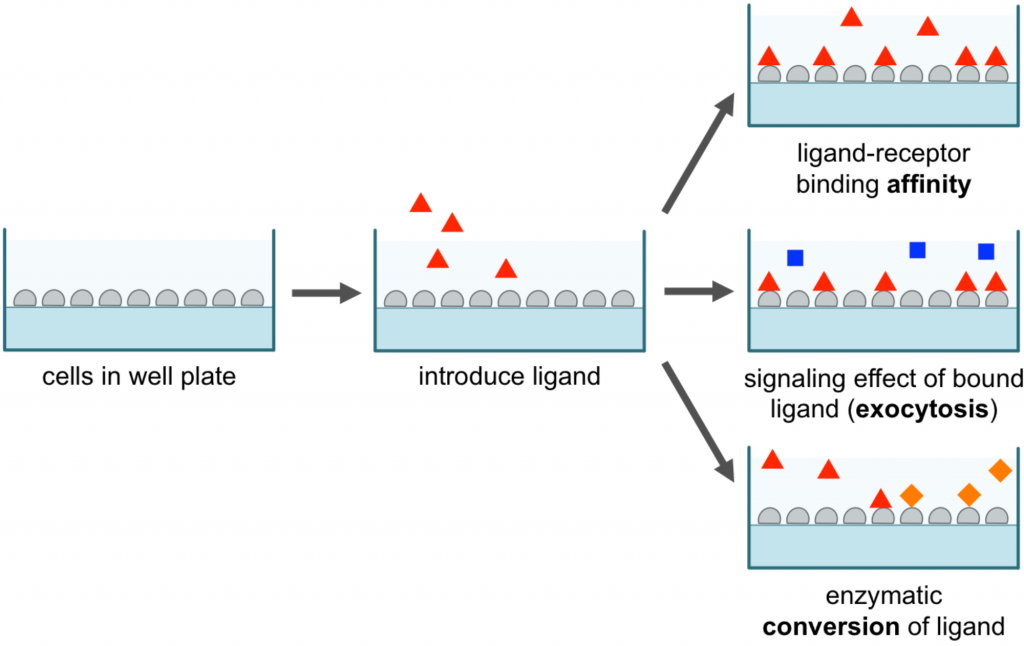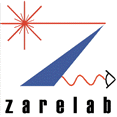In Situ Measurement of Ligand-Receptor Interactions at the Cell Surface by Ambient Ionization Mass Spectrometry
Sarah E. Noll
Studies have shown links between G-protein coupled receptors (GPCRs) and a variety of psychiatric disorders, including depression, schizophrenia, and bipolar disorder.1 GPCRs comprise the largest class of membrane proteins2 and are the central focus of this work. Furthermore, over 140 GPCRs have endogenous ligands that are yet to be identified.3 To better explore these ligand-receptor interactions at the cell surface, the resulting cellular responses, and to identify new ligands (Figure 1), we require a sampling method that is information-rich and cell-compatible. For this purpose, we are developing a sampling system that would allow real-time, in situ measurements of living cells by mass spectrometry. Through careful system engineering, accounting for cell- and mass spectrometer-compatible buffers and the effect of spray voltage on samples, populations of cells can be studied with no resulting damage. Ambient ionization high-resolution mass spectrometry is an ideal tool for these studies, as it is non-invasive, requires no sample derivatization, and allows simultaneous detection of many analytes. Our hope is that a better understanding of ligand-receptor interactions at the cell surface and subsequent cellular responses will lead to new insights into these psychiatric disorders.

Figure 1. By introducing a ligand, we can study three phenomena: 1) ligand-receptor binding affinity, 2) the signaling effects of a bound ligand, and 3) enzymatic conversion of a ligand.
1. Catapano, L.A.; Manji, H.K. G protein-coupled receptors in major psychiatric disorders. Biochim. Biophys. Acta. 2006, 1768(4), 976-993.
2. Rosenbaum, D.M.; Rasmussen, S.G.; Kobilka, B.K. The structure and function of G-protein-coupled receptors. Nature. 2009, 459(7245), 356-363.
3. Tang, X.; Wang, Y.; Li, D.; Luo, J.; Liu, M. Orphan G protein-couple receptors (GPCRs): Biological functions and potential drug targets. Acta Pharmacol. Sin. 2012, 33(3), 363-371.
